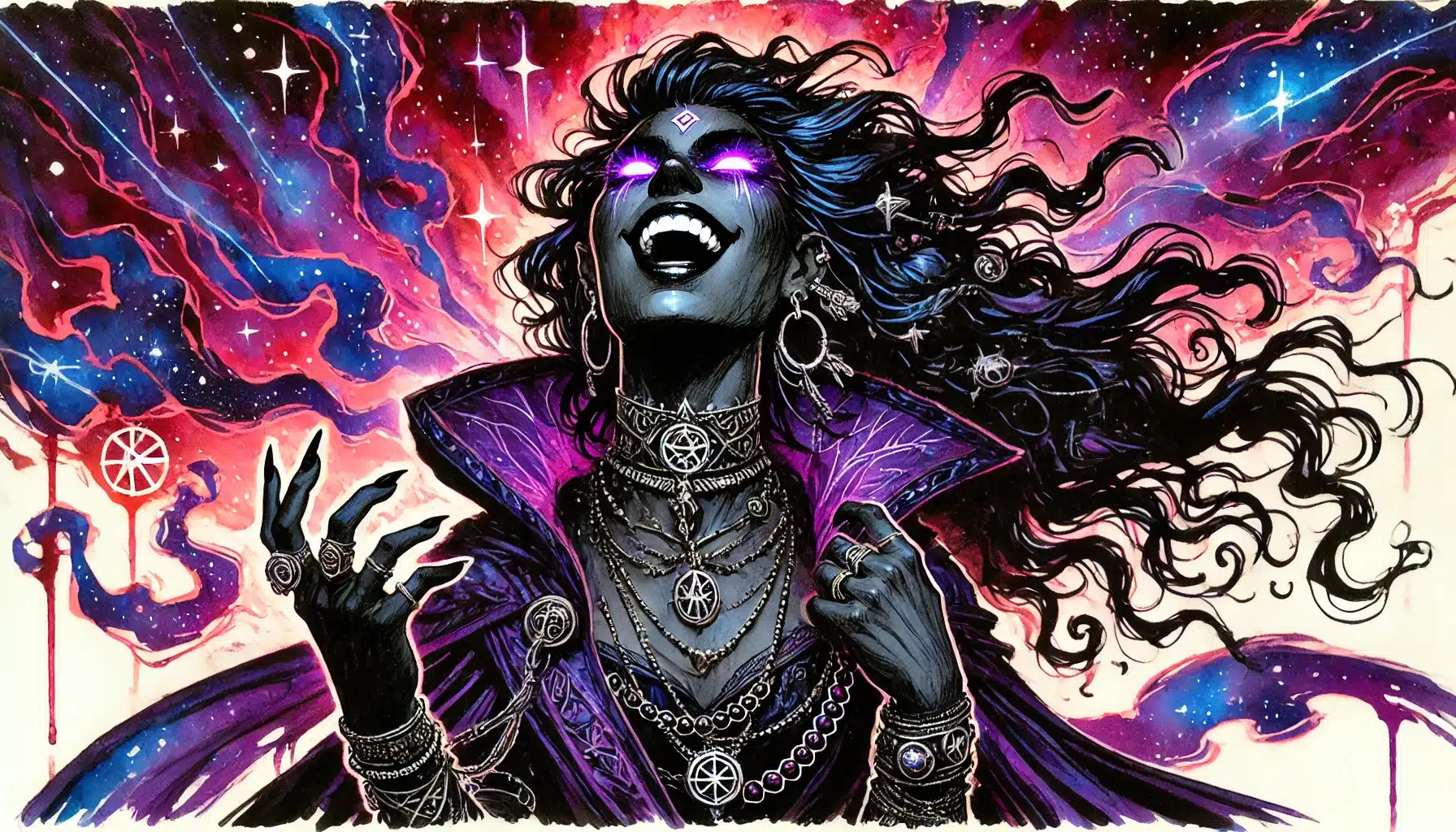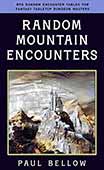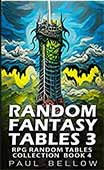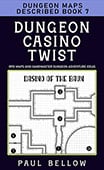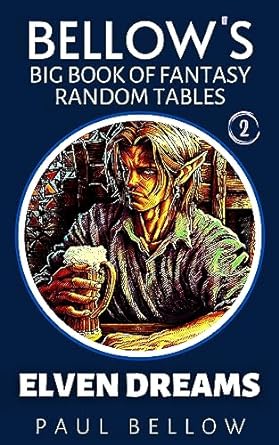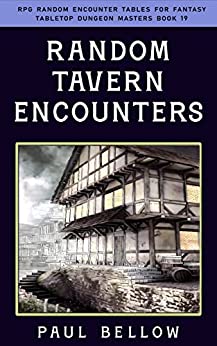In the grand tapestry of storytelling, especially at the gaming table, there’s something intrinsically captivating about a villain who bleeds, falters, and hides shadows in their heart. The mustache-twirling scoundrel who exists solely to thwart the heroes has its place, but it’s the villain riven by emotional fractures or haunted by unresolved regrets who lingers in our memory long after the dice have stopped rolling. Why? Because flawed villains invite us to peer into the abyss and recognize, perhaps uncomfortably, a flicker of ourselves staring back.
Flaws transform the one-dimensional into the multidimensional. Rather than cardboard cutouts cackling from shadowy thrones, villains with tangible weaknesses—say, Darth Vader’s aching conflict between darkness and lost love, or Magneto’s bitterness born of past trauma—become more than mere plot devices. They become the story’s pulse, generating empathy in places where contempt would typically rule. Through their struggles, we witness the humanity (or inhumanity) that makes every action unpredictable. Suddenly, it’s not just “good vs. evil,” but a clashing of complicated souls.
Consider how these flaws ripple through narrative complexity. A villain with a code of honor might hesitate in a deadly duel, revealing a sliver of vulnerability that invites negotiation or manipulation—on both sides. Perhaps their fatal flaw isn’t an insatiable lust for power, but a desperate need to belong, twisting them into monstrous forms as they grasp for acceptance. These imperfections open unexpected avenues for growth, defeat, or even alliance, keeping the party—and the Dungeon Master—on their toes.
Iconic examples pepper the annals of pop culture. Loki from the Marvel universe, needy for validation beneath layers of bravado; Walter White, who spirals from good intentions to horrific choices through pride and rationalization. Their flaws don’t just spur drama; they shatter our certainty, making us question where the moral lines truly lie. Every moment becomes tinged with tension, because the villain might surprise us almost as much as they surprise themselves.
For Dungeon Masters, the call is clear: Don’t merely drop a dark lord onto the map as an obstacle. Breathe life, complexity, and history into your antagonists—enough that, if the dice fell another way, they might have been heroes, or at least someone’s tragic friend. The secret, and the delight, lies in moral ambiguity. Great D&D Flaws are the chisel and brush that humanize evil, making every encounter not just a combat, but a story.
The Narrative Power of Villain Flaws
Every memorable story is built on tension, and flaws are the subtle, simmering undercurrents that keep that tension alive. When a villain carries a flaw—be it a festering grudge, a hidden fear, or a stubborn blind spot—it provides fertile ground for narrative challenges beyond the sword’s edge. The flaw becomes a ticking bomb of uncertainty, shaping every decision and cranking up suspense whenever the party comes near.
Try my AI Tabletop RPG generators...and an extensive library of content!
Because flaws reveal motivation, they illuminate the logic (however twisted) behind a villain’s deeds. A tyrant isn’t cruel simply for cruelty’s sake—they might be grasping for control after losing everything, or seeking twisted justice for past wrongs. This depth turns “Why are they doing this?” from a simple question into a nuanced riddle, pushing the party to understand, not just oppose. It also ensures that the villain’s actions are as much about personal stakes as they are about thwarting heroes.
Flaws aren’t mere set dressing; they create internal conflict that enlivens the narrative. When a villain is torn—say, between their burning ambition and a shred of compassion—they generate moments of unexpected softness or shocking brutality. This internal war can mirror, or violently contrast with, the hero’s own journey. Perhaps the paladin and the necromancer both lost loved ones but responded in opposite ways: one forgave, the other shattered. Through these contrasts and parallels, themes deepen, and every clash is loaded with more than just damage rolls.
It’s easy to overlook how minor flaws can spiral. A simple case of overconfidence leads a villain to underestimate the adventurers, resulting in a crushing defeat that sows seeds of paranoia for future encounters. Or a penchant for vanity might compel a villain to monologue at the wrong moment, offering the party a precious opportunity. These spirals aren’t just plot twists—they’re a drumbeat tying the villain’s fate to the choices they, and the party, make.
Types of Flaws That Deepen Villain Complexity
No two villains are the same, because no two flaws twist a soul in quite the same way. The makeup of a villain’s inner wounds, insecurities, and passions shapes everything about their style and choices. The sadistic noble whose cruelty masks deep loneliness will plot and react differently than the cult leader who genuinely fears death and desperately seeks immortality.
⚔️ Fantasy RPG Random Tables Books
Make life as a Gamemaster easier…
If you play Dungeons & Dragons, Pathfinder, or other fantasy RPGs, this
RPG random tables series
is packed with encounters, NPCs, treasure, and more. Available in eBook or print—either way, you’ll have a wealth of adventure ideas at your fingertips.
Some flaws stem from old wounds: a betrayal, a tragedy, or even a simple misunderstanding blown out of proportion. Others arise from character traits gone sour—pride curdling into arrogance, love rotting into jealousy, courage decaying into recklessness. These are the ingredients that catalyze both conflict and rare, redemptive moments of connection with the heroes.
Fear is an especially potent flaw. It can force a villain into rash decisions, making them dangerous and unpredictable, or it can drive them into retreat, sowing seeds for a cat-and-mouse rivalry. Equally intriguing, a villain’s self-doubt or insecurity might yield a surprising willingness to parley or accept the party’s mercy—if only the heroes can spot the cracks in the armor.
Layering different types of flaws creates villains who are more than just the sum of their evil deeds. The interplay between, say, vengeance and cowardice, or obsession and loneliness, can inspire complicated plans, reversals, and alliances. Such complexity delights players and offers DMs a sprawling canvas for conflict, tragedy, and the occasional, electrifying glimmer of redemption.
Bullet List — Villain Character Flaws and Their Narrative Influence:
- Arrogance — Drives underestimation of heroes, leading to tactical errors.
- Obsession — Fixation blinds to alternative solutions or escapes.
- Cowardice — Flees or betrays allies when the tide turns.
- Vengeance — Prioritizes personal grudges over rational strategy.
- Insecurity — Seeks constant validation, prone to flattery or manipulation.
- Loneliness — Yearns for company, may hesitate to harm or seek connection.
- Pride — Refuses help or admits mistakes, dooming their plans.
- Paranoia — Distrusts allies, weakens own network through suspicion.
- Mercy — Shows unexpected kindness, creating moral dilemmas.
- Guilt — Avoids certain acts, haunted by past actions, open to negotiation.
- Stubbornness — Refuses to adapt, leading to repeated failures.
- Recklessness — Takes needless risks that change encounter dynamics.
- Jealousy — Targets rivals or even minions, creating rivalries within the ranks.
- Nostalgia — Clings to the past, underestimates new threats or changes.
- Impatience — Rushes plans, making mistakes open to exploitation.
- Cruelty — Enjoys suffering, spurs uprisings or betrayal among followers.
- Desperation — Gambles everything, causing unpredictable chaos.
- Naiveté — Trusts the wrong people, setting up double-crosses.
The beauty of these flaws is in their endless combinations. Shuffling them together, you gain a new villain—one whose every move feels earned, fraught, and fascinating.
Villains crafted with this diversity don’t just thwart the party—they haunt, surprise, and maybe, for a heartbeat, even earn sympathy. They provide an endless wellspring of stories, motives, and dilemmas for roleplay, reshaping every encounter from a brawl to a tense, memorable episode.
The more varied your flaws, the more each encounter crackles with individuality. These complex antagonists hook players, fuel moral debate, and linger as vividly in memory as any hero.

Using Flaws to Drive the Story Forward
Flaws aren’t just there to flavor character; they’re active engines propelling your campaign ahead. A villain’s arrogance might land them in the party’s trap, or their guilt over a dark deed may lead to an uneasy truce or dramatic betrayal. These narrative pivots turn static opposition into dynamic, ever-evolving storytelling, ensuring the villain’s presence is felt even when they’re not on stage.
Consider a villain with hidden mercy: at a critical moment, they spare an adventurer, throwing a wrench into party expectations. Or a villain’s cowardice could send the story down a rabbit hole when they abandon loyal followers to save their own skin, sowing chaos in their wake. Each flaw shapes not just encounters, but the very trajectory of your campaign, from unlikely alliances to tragic showdowns.
What’s more, flaws can serve as clues. Parties who notice a villain’s pattern of impatience, for example, might exploit it by laying timed distractions or bait. Recognizing jealousy might allow them to pit the villain’s allies against one another. These reversals are deeply satisfying because they grow from character, not contrivance.
And sometimes, a flaw is a ticking time bomb for redemption or disaster. The desperate cultist, pushed by their own fears, betrays their dark master. The sorrowful necromancer tries—and fails—to make amends. These moments ripple through your story, creating layered consequences that echo far beyond a single battle.
| Flaw | Story Consequence | Encounter Manifestation | Possible Player Reaction |
|---|---|---|---|
| Arrogance | Villain walks into a trap | Ignores warnings, taunts heroes | Taunt in return, lure into ambush |
| Cowardice | Flees, abandoning objectives | Attempts risky escape, avoids confrontation | Pursue, cut off escape route |
| Mercy | Spares a hero | Hesitates to finish a kill | Attempt negotiation |
| Paranoia | Betrays allies, weakens self | Attacks minions, refuses to trust informants | Infiltrate via a false identity |
| Vengeance | Makes reckless, personal choices | Singles out one hero, loses strategic edge | Draw out attack, lure to isolated area |
| Obsession | Ignores other threats | Fixated on artifact, leaves flank exposed | Steal/replace object of obsession |
| Guilt | Seeks atonement, hesitates | Avoids certain actions, secretly assists | Offer chance for redemption |
| Jealousy | Turns on own henchmen | Fights ally during chaos | Encourage infighting |
| Recklessness | Escalates situations wildly | Charges headlong, ignores defenses | Bait into traps, exploit chaos |
| Loneliness | Craves conversation | Engages in dialogue, hesitant to kill | Talk, offer companionship |
| Impatience | Blunders into action | Rushes ambush, leaves evidence | Set up timed traps, delay to frustrate |
| Pride | Refuses tactical retreat | Stands ground, refuses surrender | Overwhelm, exploit lack of flexibility |
When flaws are built into your campaign’s DNA, every twist feels earned, and every surprise arises from character, not mere randomness. Suddenly, your villain is shaped by the players as much as the world you’ve created.
⚔️ Fantasy RPG Random Tables Books
Make life as a Gamemaster easier…
If you play Dungeons & Dragons, Pathfinder, or other fantasy RPGs, this
RPG random tables series
is packed with encounters, NPCs, treasure, and more. Available in eBook or print—either way, you’ll have a wealth of adventure ideas at your fingertips.
A campaign with flawed villains isn’t a railroad, but a weaving web, each strand tugged by the interactions between flaw, party, and story. The villain ceases to be just a final boss—they become a living, breathing force within the world, their saga unfolding alongside your heroes.
Designing Redemption Arcs or Tragic Falls
It’s the stuff of epic fantasy: a villain on the cusp of damnation, or grace, their fate swaying like a lantern in a storm. Often, the roots of their final arc are planted deep within their flaws. A tyrant broken by moments of doubt; a zealot whose guilt cracks their resolve; the criminal mastermind who, at the end, cannot escape the weight of their loneliness—these arcs lend gravitas to any campaign climax.
Flaws fuel both redemption and tragedy. A villain may start as an implacable force, only to waver at a crucial juncture—if pressed, persuaded, or outmaneuvered by insightful players. Conversely, a villain given the possibility of change might turn away, sealing their doom. The tragedy is sharper when the possibility of redemption once glimmered fiercely.
These arcs should always feel like outgrowths of in-world choices—player actions, the right word or gesture at a critical time, the villain’s own internal wrestling. Heroes who notice the flaw and nurture that seed of doubt or hope are rewarded with one of gaming’s most powerful payoffs: a narrative that feels alive, dynamic, and irreversibly altered.
But such arcs must remain rare and hard-won. Overusing them risks cheapening the villain’s menace; redemption or tragic fall is meaningful only when hard-earned. The tension—the uncertainty—is the spice that makes these resolutions unforgettable.
Bullet List – Redemption or Tragic Fall Scenario Ideas:
- A tyrant motivated by grief may surrender if the party returns a lost loved one’s memento.
- A scheming vizier’s paranoia causes them to destroy their own coup in panic.
- An undead lord wracked with guilt bargains for release from their curse.
- A proud warlord spares a defeated foe, sealing their loss in the ensuing civil war.
- A jealous noble betrays themselves while trying to outdo a charismatic party member.
- A cultist desperately seeks forgiveness after seeing the horror they unleashed.
- An exiled mage’s self-loathing leads them to sabotage their own ritual.
- A bandit chief, prizing loyalty above all, frees prisoners out of respect.
- The monster, once human, recognizes an old friend and hesitates in battle.
- A vengeful ghost finds peace when its story is finally told.
- The dominating lich, bored with power, lets the heroes win just to end its ennui.
- A fanatic’s faith wavers when a party member demonstrates kindness.
- The assassin seeking revenge is disarmed by an offer of understanding.
- A reckless demon is banished forever by their own followers after too much chaos.
Handled with care, these endings can lend your campaign a lingering, bittersweet aftertaste. They drive home that every villain is, or was, a person with choices—capable of staggering defeat or, just maybe, redemption.
For DMs, the final word is balance: one or two arcs in a saga is plenty. Preserve the villain’s weight, but don’t shy away from complexity. The possibility of change is what makes stories—and characters—feel real.
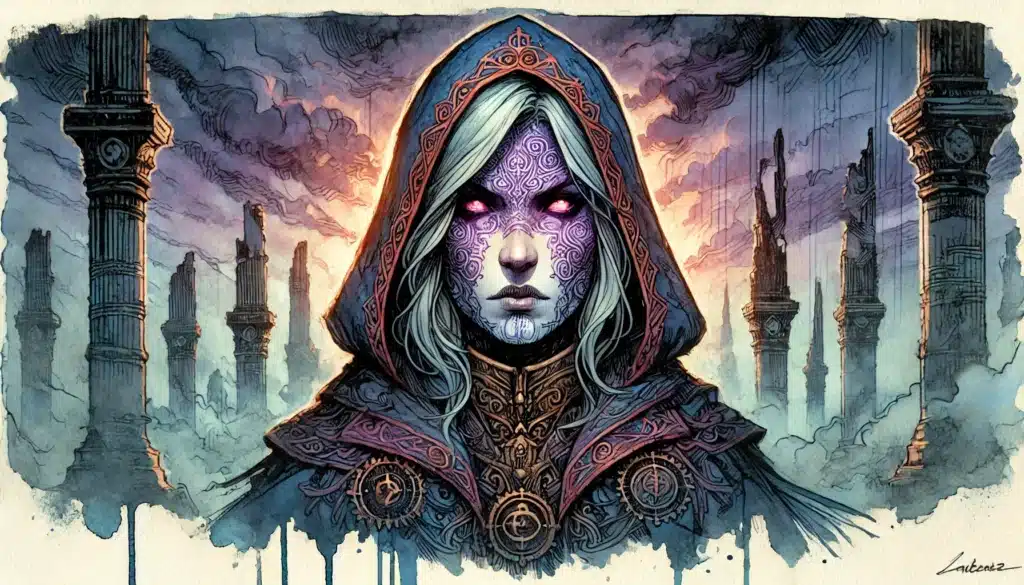
Making Flawed Villains Work in Gameplay
Translating deep character work into the rollicking pace of a game session is part art, part science. Flaws can’t just be backstory—they must leave fingerprints in the mechanics and rhythm of play. A villain’s overconfidence should be a chink in the armor for savvy players; their desperation ought to color every tactical choice and negotiation.
Incorporating flaws mechanically lets players both see and exploit them, anchoring story beats in tangible gameplay. If a villain’s pride causes them to reject tactical retreats, the party notices—and can plan around it. If insecurity makes them crave flattery, a bard’s honeyed words might unlock a surprising turn of events.
This is the key balance: maintaining narrative depth without derailing momentum. Flaws must feel like living parts of the villain’s psyche, subtly shifting the course of combat or conversation, yet never grinding sessions to a halt.
Roleplaying Villains with Consistent Flaws
Consistency is king. A flaw is only as believable as the ways it flickers through every interaction, every line delivered, every desperate gambit made. Don’t announce, “The villain is jealous”—show it through icy glares at a favored lieutenant or snide remarks about the party’s new treasure.
A villain wracked by fear might tremble or stutter when challenged, while an arrogant overlord oozes confidence even as their plans crumble. Battle tactics and dialogue should both reflect flaw-inspired choices: the reckless one charges headlong, while the patient manipulator never fights without an escape route.
Use tone and pacing as well. Allow hesitation to stretch a tense scene; let anger spark sudden violence when a villain’s buttons get pushed. Sometimes, flaws don’t reveal themselves until the villain is truly pressed—so give them the spotlight at just the right, dramatic moment.
But be mindful of subtlety. Overplaying a flaw risks turning your villain into a caricature. Instead, layer signs of weakness throughout: let it simmer in pauses, outbursts, nervous tics, or patterns of speech.
Bullet List – Roleplaying Techniques to Reflect Villain Flaws:
- Stammering or sweating when stakes rise (fear/insecurity)
- Gloating excessively in victory (arrogance)
- Interrupting, unwilling to hear others’ plans (impatience)
- Deflecting blame onto subordinates (insecurity)
- Offering a parley just as they gain the upper hand (mercy)
- Emotional outbursts with little provocation (recklessness)
- Ignoring wounded allies to chase a personal target (obsession/vengeance)
- Making and breaking promises to keep people off balance (paranoia)
- Insisting on elaborate, theatrical speeches (pride/vanity)
- Clinging to tokens or relics during tense moments (nostalgia)
- Bemoaning a lack of friends or followers (loneliness)
- Seeking out the bard for validation (insecurity)
- Giving contradictory orders as their nerves fray (anxiety)
- Refusing to retreat, even as allies flee (stubbornness/pride)
- Relying on memory of old victories, misjudging new threats (nostalgia/arrogance)
- Selecting one party member to focus all energy on (jealousy/obsession)
The goal: let flaws percolate until players can name them—without their suspension of disbelief ever breaking.
Find the line between too subtle (players miss the character’s nuance) and too obvious (cartoonish, comedic), and your villain will feel chillingly real.
Handled deftly, flaws fire the imagination. They invite players to probe, poke, and even sympathize—galvanizing every scene.
Flaws That Affect Combat and Strategy
Combat isn’t just math and metal. It’s an expression of character, and a villain’s flaws can make a battlefield feel like the stage for a thrilling, deadly drama. An overconfident lich lingers to gloat, granting the party a window for a surprise attack. The cowardly assassin escapes rather than finish the job, complicating the mission.
Try my AI Tabletop RPG generators...and an extensive library of content!
Consider the cautious cult leader, retreating behind minions whenever threatened—or the reckless demon, charging heedlessly into magical traps. Each decision is shaped by internal bruises and biases, rendering even familiar tactics unpredictable.
This approach transforms encounters. The villain’s flaw might expose them to ambush, or send them fleeing into the arms of another enemy, triggering fresh chaos. Players can devise clever traps, eloquent speeches, or biting taunts tailored to the villain’s weakness, contributing to a feeling of agency and cleverness.
And nothing is more memorable than a boss battle where victory is earned not by brute force, but by understanding—by seeing through the mask of evil to the trembling humanity beneath.
| Flaw Type | Combat Behavior Influenced By Flaw | Example Scenario | Player Exploit |
|---|---|---|---|
| Overconfidence | Engages multiple foes recklessly | Lich ignores backup, wades in alone | Coordinate attacks, flank |
| Cowardice | Attempts to flee early if hurt | Assassin disengages at first blood | Block escape, set tripwire |
| Obsession | Ignores party to pursue single target | Cultist chases artifact under fire | Bait with artifact, ambush |
| Paranoia | Distrusts own minions, acts solo | Warlord isolates self in combat | Separate, then overwhelm |
| Desperation | Uses risky, powerful moves too early | Mage casts last spell while weak | Duck, counter, attack exposed |
| Pride | Issues duels, refuses “dishonorable” tactics | Knight challenges strongest PC | Team up, break the “rules” |
| Impatience | Makes rash, poorly planned attacks | Bandit chief charges unprepared | Delay, exhaust with hit-and-run |
| Jealousy | Targets those receiving more attention | Sorcerer ignores tank for bard | Shield bard, retaliate |
| Stubbornness | Refuses retreat, fights to bitter end | Necromancer stays, gets surrounded | Wear down, surround |
| Loneliness | Tries to talk during fight, distracted | Vampire attempts dialogue mid-battle | Use distraction, bait for opening |
Flawed combatants transform battles from mere contests of dice to high-stakes theater, brimming with potential for ingenious play.
This approach not only deepens immersion but also weaves your villain more tightly into the world’s fabric—no longer just another foe, but a living part of the campaign’s legend.
Flaws allow villains to flex and adapt, shaping every encounter, every backstory reveal, and every last-ditch plan. Players aren’t just fighting monsters; they’re engaging with unpredictable minds and complicated ghosts, caught in the crossfire of their own tragic choices.
With each flaw woven thoughtfully into dialogue, combat, and consequence, your antagonists become as alive as your world—remembered long after their schemes have crumbled into legend.
Even in the chaos of battle, a villain’s flaws are more than set dressing. They are the cracks where true drama gleams through. When combat encounters are shaped by the antagonist’s arrogance, paranoia, or fleeting guilt, every exchange of blows becomes more than a numbers game—it transforms into a living scene that matters. The ferocity of an overconfident warlord, the trembling hesitation of a cultist haunted by regret, or the reckless rage of a spurned noble can all tip the scales, pulling every player deeper into the unfolding narrative.
These moments root the party in the story, reminding everyone around the table that this is more than a clash of swords and spells—it’s a meeting of personalities, histories, and battered hearts. Flaws transform even the simplest encounter into a meaningful conflict, where the outcome carries narrative significance and sensations of immersion linger long after the dice are gathered and silence creeps back into the room. In those split seconds when a villain wavers—a villain who until then seemed unbreakable—the world feels real, unpredictable, and endlessly thrilling.
⚔️ Fantasy RPG Random Tables Books
Make life as a Gamemaster easier…
If you play Dungeons & Dragons, Pathfinder, or other fantasy RPGs, this
RPG random tables series
is packed with encounters, NPCs, treasure, and more. Available in eBook or print—either way, you’ll have a wealth of adventure ideas at your fingertips.
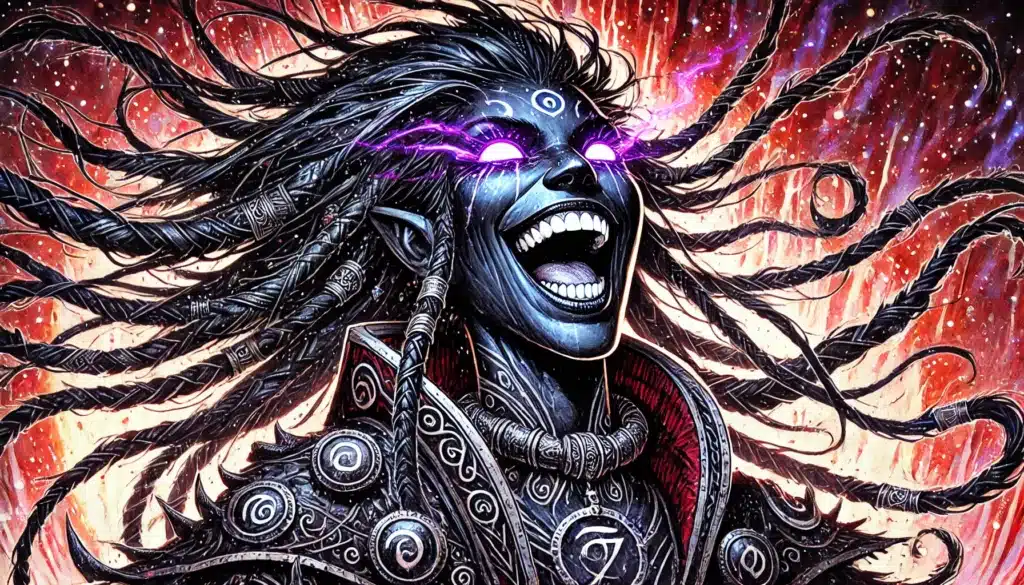
Final Reflections on Crafting Flawed Villains
Ultimately, weaving flaws into your villains breathes new depth into the tapestry of your story. Antagonists defined not only by evil deeds but by self-doubt, obsession, or loneliness become more than obstacles—they become vital, memorable catalysts for the entire narrative. These cracks in their armor offer players the chance to peer beneath the surface, encouraging them to strategize, empathize, and interact with antagonists as complicated people rather than faceless foes. When a villain’s motivations and missteps emerge naturally through play, an adventure’s stakes—and payoff—are magnified a hundredfold.
Flawed villains are dynamic in the truest sense. Their personal journeys, shaped by their weaknesses and relationships, evolve as surely as the heroes’ own arcs. An arrogant villain may slowly unravel in the face of repeated defeats, paranoia may fester until their empire crumbles from within, or an unexpected moment of mercy can swing a campaign into uncharted territory. Each choice, mistake, and moment of hesitation or fury tightens their connection to the party, binding antagonist and hero in an ever-twisting dance.
Over time, these intricately crafted adversaries embed themselves in memory. Players talk about the haunted necromancer who almost changed, the warlord who shattered because of his pride, or the bandit queen brought low by guilt. These aren’t just end-of-session footnotes—they are living threads in the campaign’s ongoing legend. Every engagement with such a villain adds layers to the group’s shared story, building not just challenge but anticipation, tension, and genuine investment.
The ultimate reward for Dungeon Masters lies in this richness. Investing a little extra creative energy in developing a villain’s flaws pays exponential dividends in player reaction—engaged faces, bold plans sparked by subtle insights, and emotional echoes that endure. Players feel respected when antagonists are more than plot devices, and the campaign world seems fuller, more surprising, and more alive.
So experiment with villainy. Let antagonists stumble, revise, and sometimes even change course. Allow them space to react to the heroes’ cleverness, adapt to setbacks, and show glimmers of tragedy or redemption. As flaws come to shape every scene—from negotiations to desperate skirmishes—your villains will not only challenge your party, but become legends within your world, leaving a legacy as rich and enduring as any champion ever could.

